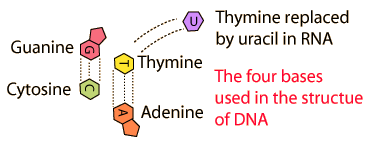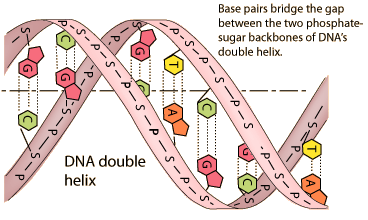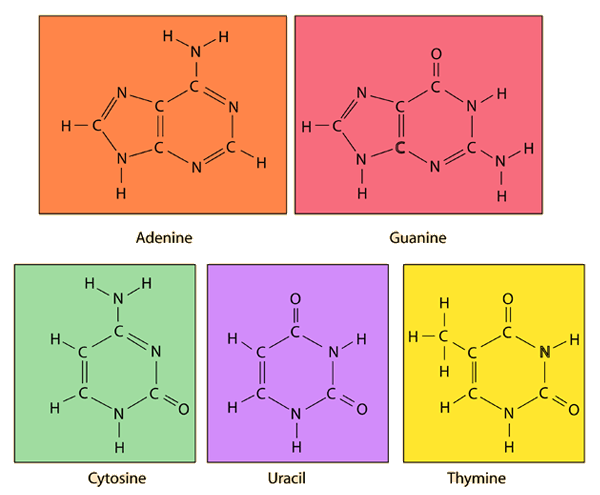Nitrogenous Bases
A set of five nitrogenous bases is used in the construction of nucleotides, which in turn build up the nucleic acids like DNA and RNA. |  |
 |
These bases are crucially important because the sequencing of them in DNA and RNA is the way information is stored. The letters which form the codons in the genetic code are the A C U G of the bases. |

The larger bases adenine and guanine are purines which differ in the kinds of atoms that are attached to their double ring. The other bases cytosine, uracil, and thymine are pyrimidines which differ in the atoms attached to their single ring. To make nucleotides, these bases attach to a pentose sugar, either ribose or deoxyribose, along with a phosphate group. With the two sugars, a total of eight types of nucleotide building blocks are made. Two apparent possibilities are eliminated because ribose does not couple with thymine and deoxyribose does not couple with uracil.
The resulting DNA (deoxyribonucleic acid) contains no uracil, and RNA(ribonucleic acid) does not contain any thymine.
| Bases in the DNA structure |
Biochemical concepts
Chemistry concepts
| HyperPhysics*****Chemistry | R Nave |